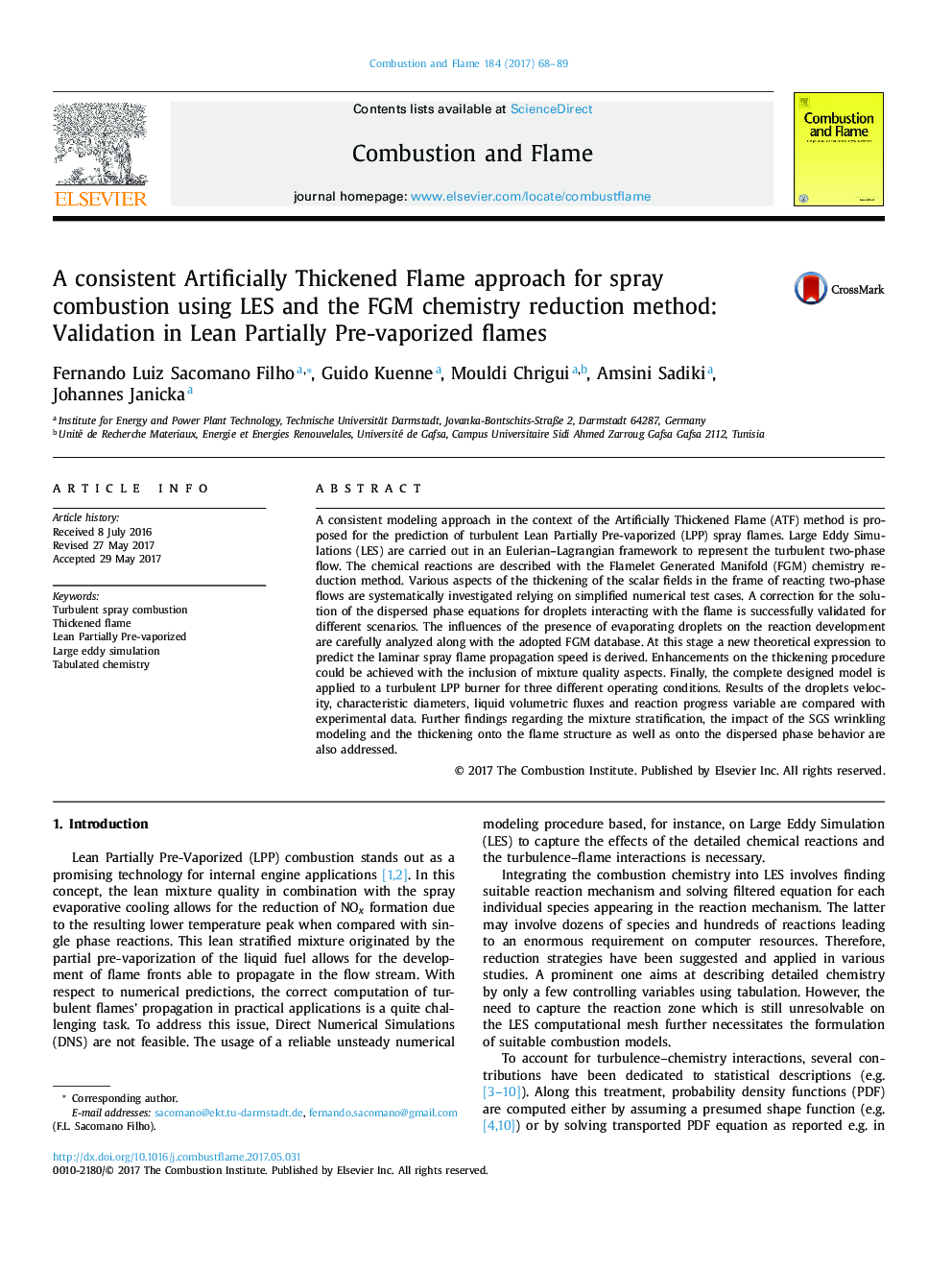| Article ID | Journal | Published Year | Pages | File Type |
|---|---|---|---|---|
| 4764449 | Combustion and Flame | 2017 | 22 Pages |
Abstract
A consistent modeling approach in the context of the Artificially Thickened Flame (ATF) method is proposed for the prediction of turbulent Lean Partially Pre-vaporized (LPP) spray flames. Large Eddy Simulations (LES) are carried out in an Eulerian-Lagrangian framework to represent the turbulent two-phase flow. The chemical reactions are described with the Flamelet Generated Manifold (FGM) chemistry reduction method. Various aspects of the thickening of the scalar fields in the frame of reacting two-phase flows are systematically investigated relying on simplified numerical test cases. A correction for the solution of the dispersed phase equations for droplets interacting with the flame is successfully validated for different scenarios. The influences of the presence of evaporating droplets on the reaction development are carefully analyzed along with the adopted FGM database. At this stage a new theoretical expression to predict the laminar spray flame propagation speed is derived. Enhancements on the thickening procedure could be achieved with the inclusion of mixture quality aspects. Finally, the complete designed model is applied to a turbulent LPP burner for three different operating conditions. Results of the droplets velocity, characteristic diameters, liquid volumetric fluxes and reaction progress variable are compared with experimental data. Further findings regarding the mixture stratification, the impact of the SGS wrinkling modeling and the thickening onto the flame structure as well as onto the dispersed phase behavior are also addressed.
Related Topics
Physical Sciences and Engineering
Chemical Engineering
Chemical Engineering (General)
Authors
Fernando Luiz Sacomano Filho, Guido Kuenne, Mouldi Chrigui, Amsini Sadiki, Johannes Janicka,
